The shape of the heatsink is essential, but...
The SSD cooler database finally adds SSD temperature results without a cooler. These show to what extent a cooler is beneficial, or by how much it knocks down controller and memory temperatures. Some really significantly, for others it’s worse. There are more reasons for this, but the important thing is to have a check on what is happening and under what circumstances. You might end up using an alternative cooler instead of the motherboard one.
The shape of the heatsink is essential, but…
Although SSD coolers are already part of virtually every modern motherboard, their impact isn’t always such that the maximum satisfaction can be achieved.
There are a number of reasons for some objections to SSD coolers. One of them lies in the weaker heatsink articulation. Even when you’re dealing with a relatively heavier block of aluminum, cooling performance can easily be below average. This is because it lacks fins and therefore a surface that would interact with the air flowing around it. And it’s quite common for the material used for a heatsink to only use a small part of its potential. In such cases, it is quite safe to say that, from a cooling point of view, the material is being used inefficiently.
Cooling deficits may be the result of trying to achieve a “better look”, lower manufacturing costs, or the manufacturer simply didn’t see fit to tinker too much with the heatsink design. Because, for example, SSDs don’t really need a cooler in a typical gaming or even an office workload. The power consumption of current SSDs is always very low, only a fraction of the maximum, and thus there is no critical temperature. But that’s another topic, one that we’ll get to one day as well.
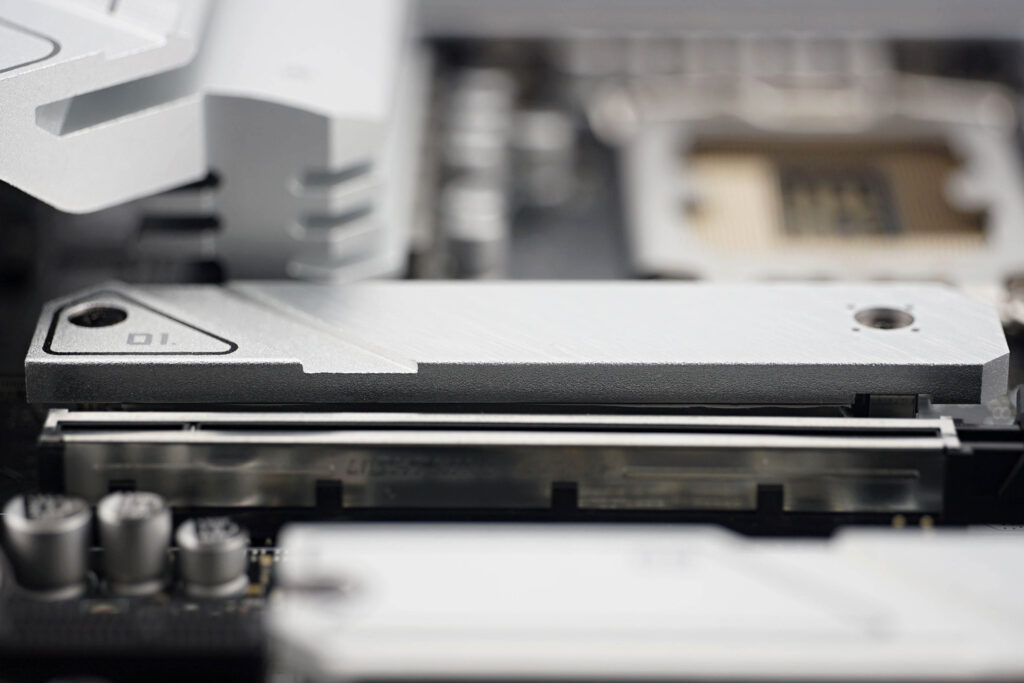
Now, let’s stay with the fact that higher cooling performance could be wrung out of many designs by simple “reformatting”, in which flat surfaces are turned into fins. We’ve covered this issue a bit before – SSD coolers are sufficient, but waste material.
And then there’s the amount of contact between the cooler base and the SSD. It can vary even with two heatsinks that are structurally identical, in which case the differences are caused by the characteristics of the mounting mechanism. For example, the secondary SSD cooler (shared by the 2nd to 4th M.2 slots) on the Gigabyte Aorus Z790 Aorus Pro X motherboard has visibly weaker contact with the SSD, as indicated by the faint (SSD) footprint in the thermal pad.
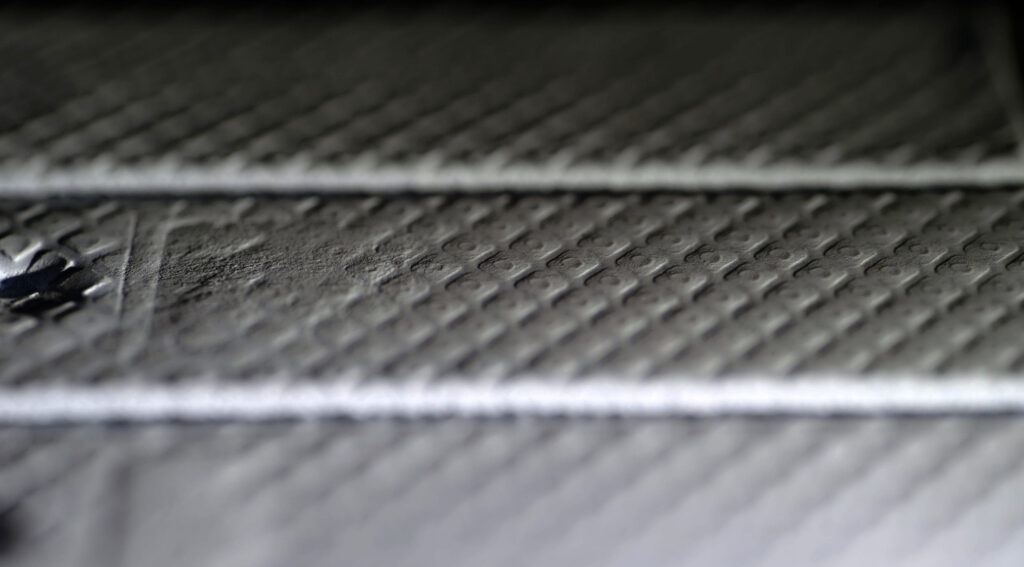
On a different Gigabyte board (the Aorus Z790 Aorus Elite AX) with a similar cooler that has a rather smaller heatsink, the efficiency is higher. One of the reasons for this might be that Gigabyte hasn’t used the tool-less, snap-on mounting system yet, but the heatsink is “properly” screwed in at three points. This may be considered a disadvantage by some due to the greater complexity of the installation, but the contact with the SSD is demonstrably better here.
Of course, the contact can be very decent, non-limiting of heat transfer, even with push-pin systems. You just need to set everything correctly. And it is Gigabyte that can learn from old mistakes in this regard. On the Z790 Aorus Elite AX, the problematic cooler, from a cooling performance perspective, on the first M.2 slot is downright wiggling. Its contact is poor, which corresponds to the only average results, which should be significantly better given the heatsink’s design. But that’s assuming higher pressure, which you also won’t get with SSDs with taller chips, be it controller or memory. On the newer Gigabyte motherboard (Aorus Z790 Aorus Pro X), however, the similarly designed heatsink (also a taller aluminum monolith with longitudinal finning and with comparable amount of surface area) is already performing significantly better in terms of cooling performance.
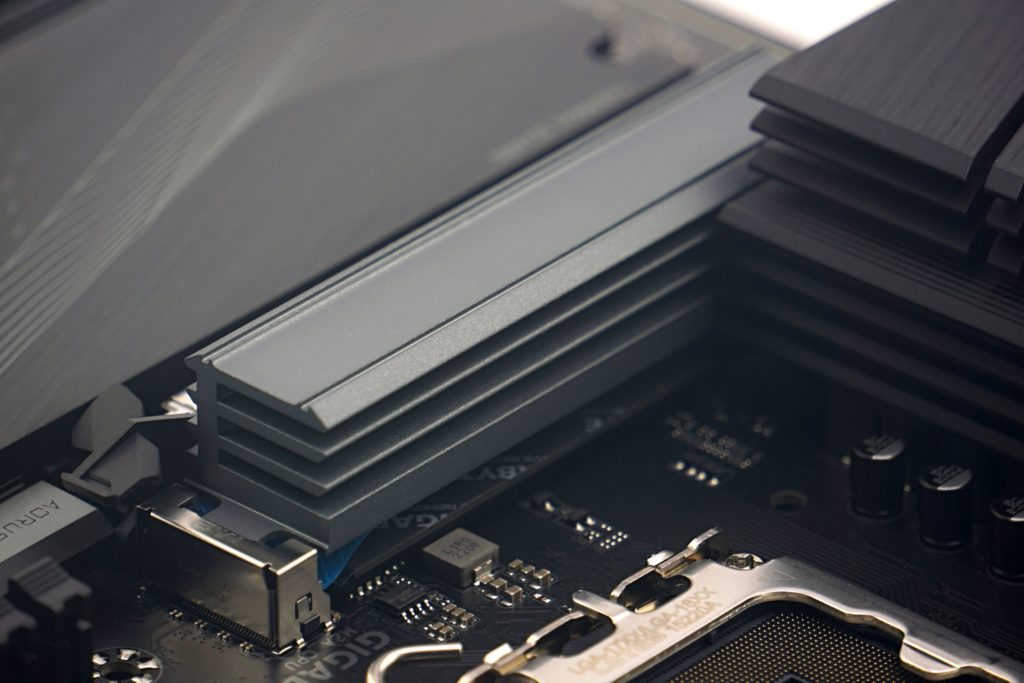
Weaker contact between coolers and SSDs can also be contributed to by motherboard PCB deformation. Not in our tests, but in general when there tends to be a lack of precision in mounting within the case, where any flexing (of the motherboard PCB and subsequently the SSD itself) should even out.
Methodology
The tests take place in a wind tunnel that substitutes for a standard computer case. Four Noctua NF-S12A PWM@550 rpm fans are used for system cooling in a balanced ratio of two intake to two exhaust fans. The intake air temperature is strictly controlled and is kept within a narrow range of 21–21.3 °C for maximum possible accuracy.
In line with findings from measurements of the impact of different positions on cooling efficiency, we test standalone SSD coolers in the first slot, above the graphics card. From board tests we naturally have a lot of results of coolers (referred to as cooler 1, cooler 2, …) from other positions as well, but in those cases, it is due to their fixed position.
The SSDs without a cooler are tested on an Asus ROG Strix Z790-E Gaming WiFi motherboard in two locations – in “Slot 1” above the graphics card and in “Slot 2” below the graphics card. We know from thematic tests where we’ve looked at the dependency of SSD cooling on the position chosen that there are some differences in cooling here, although it’s impossible to generalize which is the ‘preferable’ option. It can always be different depending on, for example, whether or not the graphics card cooling is in active mode (but also, naturally, on the layout of the case fans and the overall nature of the system cooling). Our case, with only passive cooling of the graphics card, turned out to be the worse choice from a cooling point of view. Due to excessive temperatures, the maximum performance was not even reached, the sequential read performance of which on the Intel platform in the PCIe 4.0 ×4 slot should be in the range of approximately 6600–6900 MB/s. In this case it was only around 5500 MB/s.
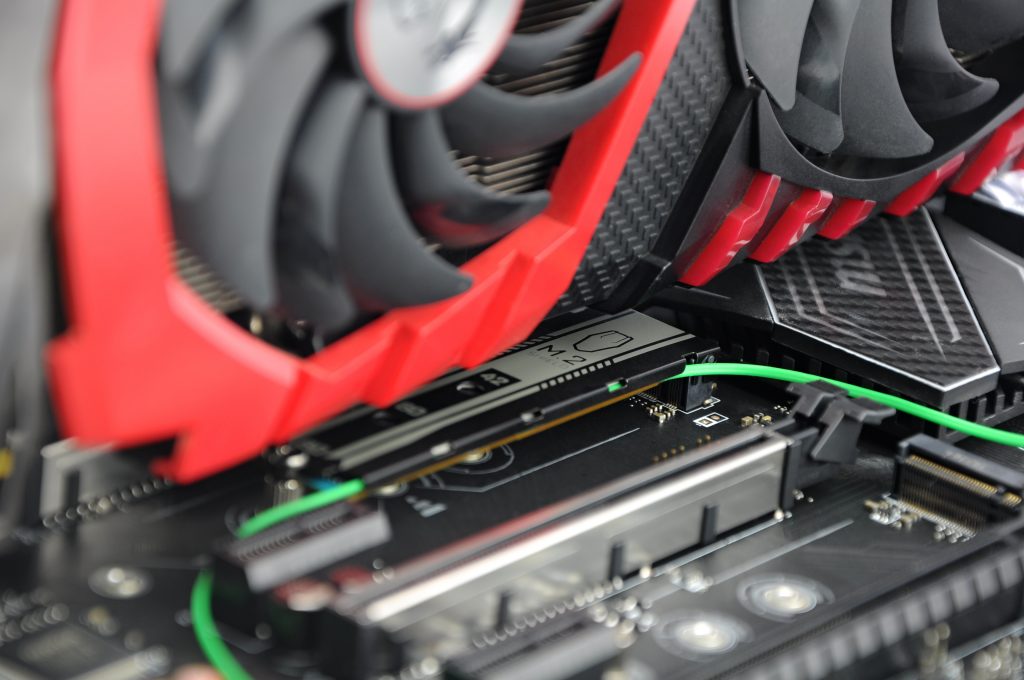
For testing, we use a Samsung 980 Pro SSD (1 TB). The load is run for 10 minutes (which is enough time in the wind tunnel for temperatures to stabilize) in CrystalDiskMark – sequential read and write cycles. The achieved power draw then is about 6 W, which is the upper limit of what M.2 SSDs can do, and not even models with PCIe 5.0 interface support are supposed to change this.
For completeness, it should be added that the tested SSD is always in its original condition with the sticker left on. Removing it is rather unnecessary as it does not really affect the heat transfer to the cooler. We have also already dealt with this in detail in tests:
Please note: The article continues with following chapters.





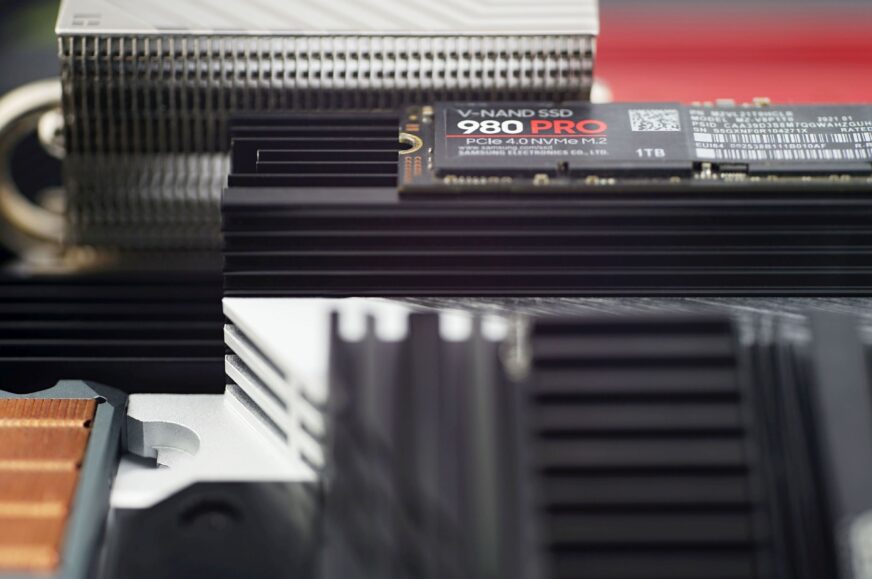
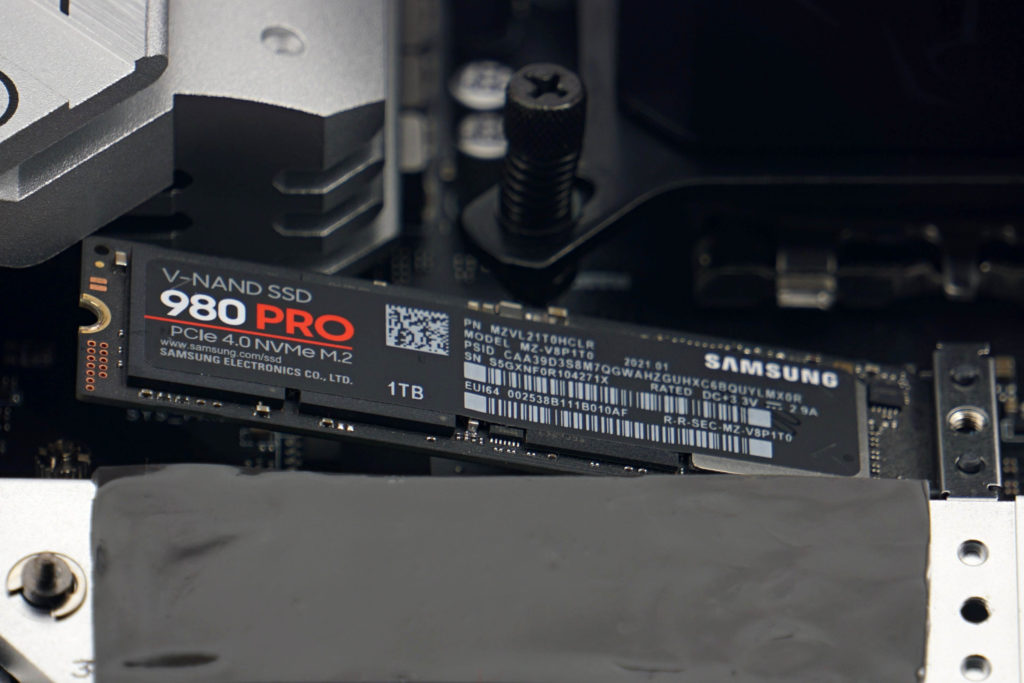






This is quickly becoming my favorite hardware review site. Thanks for all of your hard work.
I’m not surprised to see many familiar MSI models at or near the bottom of the list. I had a (PCIe 4) Corsair SSD die on me last year under the stock heat sink on an MSI MAG B660 Mortar–it didn’t even occur to me that the controller temperature was high until I slotted in a replacement drive and checked the sensors–which consistently showed temperatures in the 90s even under relatively light loads.
Adding a no-name $8 cooler from Amazon reduced controller temperatures by roughly 25 degrees. (!!!)
Worth noting that airflow to the top SSD mount can be heavily compromised if you’re running a big air cooler and a reasonably large GPU. Combine that awkward positioning with a mediocre SSD heatsink, and your temps may climb rather high even when the drive itself isn’t under heavy load.
I don’t have a bone to pick with MSI in general. The motherboards I’ve bought from them (and I’ve bought several) have all performed admirably, otherwise. But there are clearly some teething issues with regard to NVME drives, which are only going to get hotter going forward, and in return for questionable real world benefits for the average consumer. For what it’s worth, I’ll never put another drive under a motherboard’s stock heat sink again.
(I should clarify that I’m not sure exactly what killed the Corsair SSD. It just seems likely that heat played a role, in retrospect.)
Sure, with a cheap finned cooler, lower temps will usually be achieved than with flat coolers on motherboards. These, in short, lack the surface area. Each brand has a slightly different set of priorities and wants to differentiate themselves with individual elements, gain a competitive advantage, and develop different technical elements. Or, in short, each one cuts costs in a different place. And it’s great that the range is so wide that everyone can choose what makes the most sense for their use case.
So, how will the new Arctic M2 Pro cooler (link to arctic.de/en product page) stack up to competition? 🙂